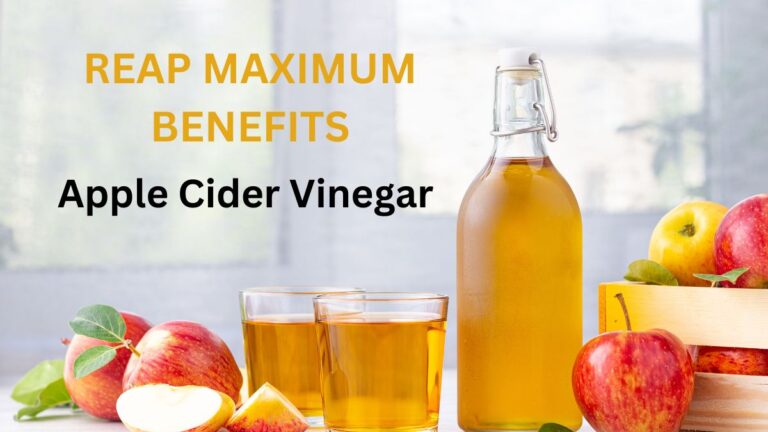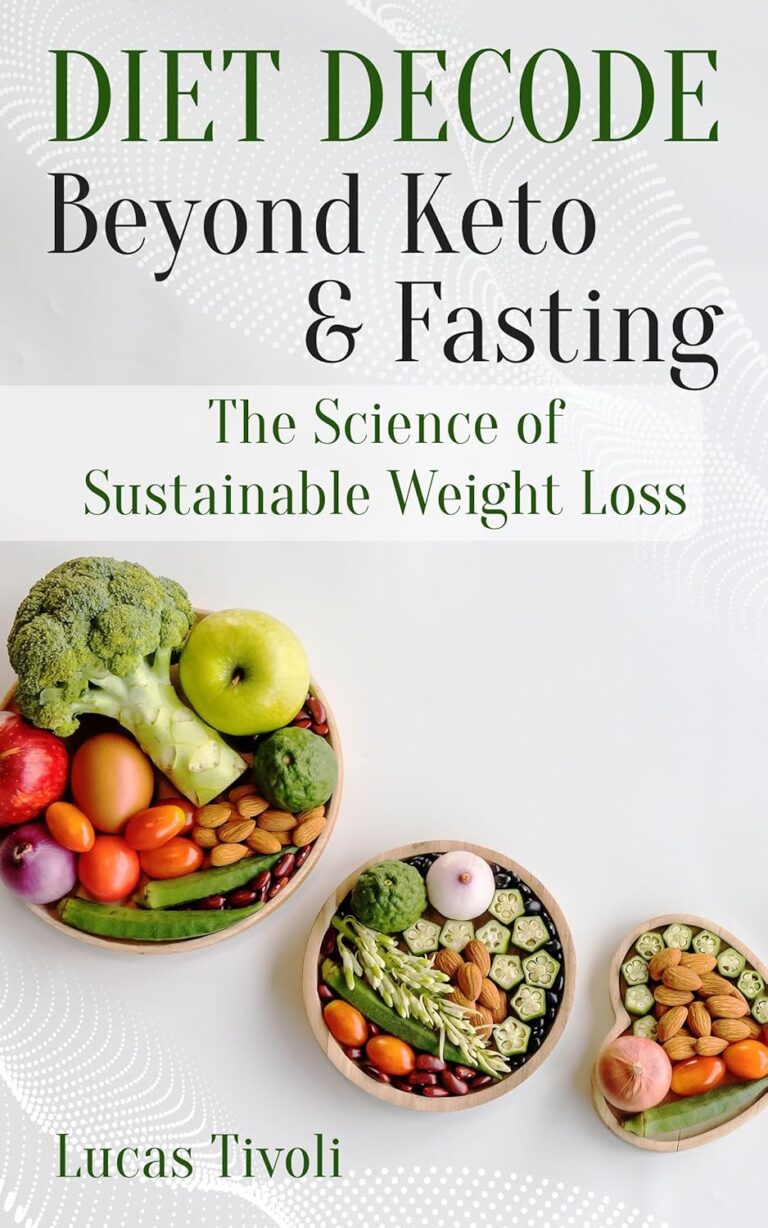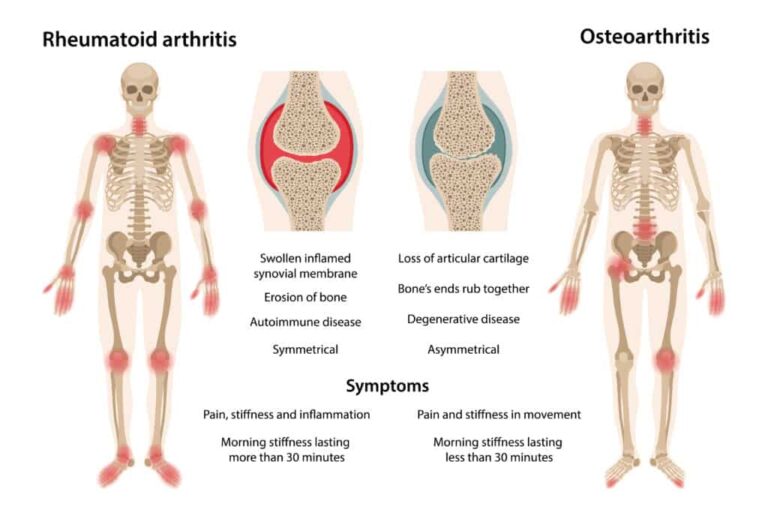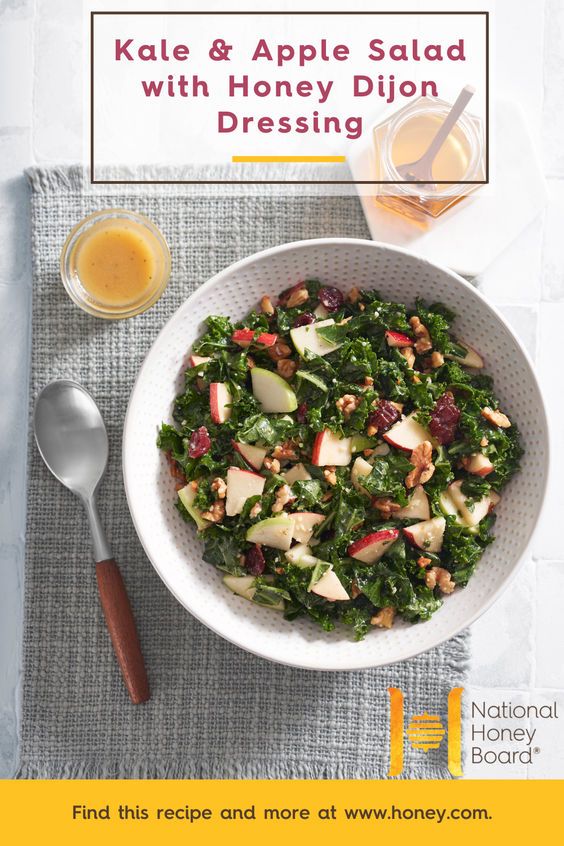The Unsung Heroes: How a Humble Bean Can Revolutionize Your Fiber and Protein Intake – A Culinary Journey
In the bustling symphony of modern life, where convenience often trumps nourishment, a silent crisis has taken root in our dietary landscape. We’re a world starved for fiber and often scraping by on suboptimal protein sources, even amidst an abundance of food. The consequences ripple through our health, manifesting as digestive woes, energy slumps, erratic blood sugar, and a heightened risk of chronic diseases. Yet, the solution, surprisingly potent and profoundly simple, often languishes in the back of our pantries or is dismissed with outdated culinary prejudices: the humble bean.
This isn’t merely an article about nutrition; it’s an invitation to embark on a culinary journey, a narrative of rediscovery and transformation. It’s a story of how an unassuming legume, often relegated to chili bowls and side dishes, can become your secret weapon, your silent ally in the quest for optimal health. We’re going to explore not just why beans are nutritional powerhouses, but how to artfully and subtly weave them into your daily diet, turning skepticism into satisfaction and dietary deficiency into vibrant wellness. For the knowledgeable palate and the health-conscious mind, prepare to unlock the full, untold potential of the bean.
The Modern Dietary Dilemma: A Fiber Famine and Protein Predicament
Before we delve into the solution, let’s contextualize the problem. The typical Western diet, characterized by processed foods, refined grains, and an overreliance on animal proteins, is fundamentally flawed in its provision of two critical macronutrients: fiber and protein.
The Fiber Famine: Dietary fiber, the indigestible part of plant foods, is the unsung hero of our digestive and metabolic health. Yet, most adults consume less than half of the recommended daily intake (25-38 grams). This deficiency leads to a cascade of issues: sluggish digestion, constipation, an imbalanced gut microbiome, unstable blood sugar levels, and increased risk of heart disease and certain cancers. Fiber isn’t just about regularity; it’s a prebiotic, feeding the beneficial bacteria in our gut, which in turn produce short-chain fatty acids crucial for gut integrity, immune function, and even mood regulation. It’s also a powerful tool for satiety, helping to manage weight by promoting feelings of fullness.
The Protein Predicament: While many believe they consume enough protein, the quality and source often leave much to be desired. An over-reliance on red and processed meats, while providing protein, often comes with saturated fats, cholesterol, and pro-inflammatory compounds. Furthermore, for those seeking plant-based alternatives or simply diversifying their protein sources, finding complete, affordable, and versatile options can be a challenge. Protein is fundamental for muscle repair and growth, enzyme production, hormone synthesis, and maintaining a healthy immune system. Optimal protein intake isn’t just about hitting a number; it’s about providing the body with a consistent supply of essential amino acids from diverse, nutrient-dense sources.
This is where our hero, the bean, steps into the spotlight.
Unveiling the Power of the Pod: Why Beans Are Non-Negotiable
Beans, encompassing lentils, chickpeas, black beans, kidney beans, cannellini beans, pinto beans, and more, are quite simply one of nature’s most perfect foods. They are a nutritional fortress, offering a remarkable synergy of benefits that directly address our modern dietary shortcomings.
-
Fiber Champions: This is where beans truly shine. A single cup of cooked beans can provide anywhere from 10 to 19 grams of fiber, often supplying nearly half of your daily recommended intake. They contain both soluble and insoluble fiber.
- Soluble Fiber: Forms a gel-like substance in the digestive tract, slowing glucose absorption (beneficial for blood sugar control), lowering LDL (bad) cholesterol, and promoting satiety.
- Insoluble Fiber: Adds bulk to stool, facilitating smooth passage through the digestive system, preventing constipation, and supporting a healthy gut microbiome by acting as a prebiotic.
-
Protein Powerhouses: Beans are an excellent source of plant-based protein, making them indispensable for vegetarians, vegans, and anyone looking to reduce their meat consumption. While most beans are not "complete" proteins on their own (meaning they don’t contain all nine essential amino acids in sufficient quantities), they are easily complemented by grains (like rice or quinoa) throughout the day to form a complete amino acid profile. A cup of cooked lentils, for instance, boasts about 18 grams of protein, while black beans offer around 15 grams. This high protein content aids in muscle repair, sustained energy, and crucial satiety.
-
Micronutrient Miracles: Beyond fiber and protein, beans are bursting with essential vitamins and minerals:
- Folate (Vitamin B9): Critical for DNA synthesis, cell repair, and preventing neural tube defects during pregnancy.
- Iron: Essential for oxygen transport in the blood, energy production, and preventing anemia. (Note: Non-heme iron from plants is best absorbed when paired with Vitamin C).
- Magnesium: Involved in over 300 biochemical reactions in the body, including muscle and nerve function, blood glucose control, and blood pressure regulation.
- Potassium: Crucial for maintaining fluid balance, nerve signals, and muscle contractions, and helps to counteract the effects of sodium on blood pressure.
- Zinc: Vital for immune function, wound healing, and DNA synthesis.
- Antioxidants and Phytochemicals: Beans contain a diverse array of bioactive compounds, including flavonoids and polyphenols, which combat oxidative stress and inflammation, contributing to disease prevention.
-
Glycemic Load Guardians: Despite their carbohydrate content, beans have a low glycemic index, meaning they cause a gradual, rather than rapid, rise in blood sugar. This is primarily due to their high fiber and protein content, which slow digestion and absorption. This makes them an excellent food choice for individuals managing diabetes or seeking stable energy levels.
-
Affordable and Sustainable: In an era of rising food costs and growing environmental concerns, beans stand out as an incredibly economical and eco-friendly food choice. They are significantly cheaper per serving than most animal proteins and have a much lower carbon footprint, requiring less water and land to produce. They also contribute to soil health by fixing nitrogen, enriching the soil for future crops.
Now that we understand the profound "why," let’s pivot to the "how." The beauty of beans lies in their versatility, their chameleon-like ability to blend into a myriad of dishes, often without detection. This is where the art of "sneaking" comes into play, transforming mundane meals into nutritional powerhouses.
The Art of Subtlety: Simple Ways to Sneak Power Beans Into Your Diet
The key to successful bean integration, particularly for those who might be hesitant, is subtlety. It’s about leveraging their neutral flavor profile (especially when well-rinsed) and their ability to add body, texture, and creaminess without overwhelming the dish.
1. The Breakfast Boost: Starting Your Day Strong
Breakfast, often the most rushed meal, is a prime candidate for a fiber and protein injection.
- Smoothie Stealth: This is perhaps the ultimate "sneak" tactic. Cooked cannellini (white) beans or chickpeas, when added to a fruit smoothie, blend in seamlessly. Their neutral flavor won’t interfere with your berries or banana, but they’ll add an incredible creamy texture, a significant boost of fiber, and a good dose of plant-based protein. Start with a quarter-cup per serving and gradually increase. You won’t taste them, but your gut and energy levels will thank you.
- Example: Blend 1 cup spinach, 1/2 cup frozen berries, 1/2 banana, 1/4 cup cooked cannellini beans (rinsed), 1 tbsp almond butter, and 1 cup unsweetened almond milk.
- Scrambled Eggs & Tofu Scrambles: Stir in a handful of finely diced black beans or pinto beans towards the end of cooking your eggs or tofu scramble. They add texture, color, and a nutrient punch that complements the savory flavors.
- Breakfast Burritos/Tacos: This is a classic. Mash black beans or pinto beans with a little salsa and spices, and use them as a hearty base for your breakfast wrap, along with eggs, cheese, and veggies.
- Overnight Oats/Oatmeal: While less "sneaky," stirring in a tablespoon or two of cooked, mashed lentils (red lentils work well as they break down easily) into your oatmeal adds protein and fiber without altering the flavor profile significantly.
2. Lunchtime Layers: Elevating Your Midday Meal
Lunch often falls victim to convenience foods. Beans can transform a lackluster lunch into a satisfying, sustained energy source.
- Salad Sensations: Forget boring salads. Roasted chickpeas (toss with olive oil and spices, then bake until crispy) add a delightful crunch and protein to any green salad. Black beans, kidney beans, or cannellini beans can be added directly, offering a creamy texture and substantiality.
- Example: A Mediterranean-inspired salad with mixed greens, cucumber, tomatoes, olives, feta, and a generous scoop of chickpeas.
- Sandwich & Wrap Spreads: This is a genius move. Mash white beans (cannellini or great northern) with herbs, lemon juice, a touch of olive oil, and seasonings to create a creamy, flavorful spread that can replace mayonnaise or add substance to a veggie sandwich. Similarly, mashed black beans can be seasoned with cumin and chili powder for a "refried bean" inspired spread.
- Example: Whole wheat bread spread with mashed herbed cannellini beans, layered with roasted red peppers, spinach, and sliced turkey (or avocado).
- Soup & Stew Boosters: Virtually any soup or stew can benefit from the addition of beans or lentils. Lentil soup is a given, but minestrone, vegetable soup, chicken noodle, or even creamy tomato soup can be enhanced with a can of rinsed cannellini beans or some red lentils stirred in during the last 15-20 minutes of cooking. They add thickness, body, and a wealth of nutrients.
- Grain Bowls: Quinoa, farro, or brown rice bowls are perfect canvases for beans. Add a scoop of black beans, pinto beans, or kidney beans alongside your roasted vegetables, protein source, and dressing for a complete, balanced meal.
3. Dinner Delights: The Ultimate Sneaking Ground
Dinner is where beans can truly shine, whether as a star ingredient or a hidden helper.
- Meat Extenders & Replacers: This is arguably the most effective "sneaking" technique for meat-eaters.
- Chili & Tacos: This is a no-brainer. Add an extra can of kidney beans, black beans, or pinto beans to your chili. For tacos or burritos, mash black beans and mix them directly into your ground meat filling (beef, turkey, or chicken) at a 1:1 or 2:1 ratio (meat to beans). The beans absorb the flavors and add moisture, fiber, and protein, often unnoticed.
- Bolognese & Meat Sauces: Finely chop mushrooms and blend them with cooked lentils or finely mashed kidney beans. Mix this mixture into your ground meat sauce. It adds incredible umami, thickens the sauce, and dramatically boosts fiber and plant-based protein, making your meat go further and enhancing its nutritional profile.
- Meatloaf & Meatballs: Incorporate mashed black beans or lentils into your meatloaf or meatball mixture. They add moisture and nutrients, often improving the texture.
- Sauces & Dips:
- Hummus, Elevated: Beyond traditional chickpea hummus, explore white bean dips (cannellini beans, lemon, garlic, olive oil) or black bean dips (black beans, lime, cilantro, cumin). Serve with crudités, pita bread, or use as a spread.
- Creamy Pasta Sauces: Blend cooked cannellini beans with roasted garlic, vegetable broth, and nutritional yeast for a rich, creamy, dairy-free pasta sauce that’s packed with protein and fiber. It mimics Alfredo sauce surprisingly well.
- Baked Goods (Yes, Really!):
- Black Bean Brownies: This is a classic for a reason. Blended black beans provide moisture, density, and a fudgy texture to brownies, often making them healthier and surprisingly delicious. The cocoa powder and sugar completely mask the bean flavor.
- Chickpea Cookie Dough: Mashed chickpeas can be used as a base for edible "cookie dough" (check recipes to ensure safe consumption), offering a high-protein, high-fiber treat.
- Casseroles & Bakes: Add a layer of black beans or pinto beans to your enchilada casserole. Stir lentils into a shepherd’s pie filling. Beans can be seamlessly integrated into many baked dishes, providing substance and nutrition.
- Fritters & Patties: Mash chickpeas or black beans with spices, herbs, and a binding agent (like a little flour or breadcrumbs) to create delicious, crispy fritters or burger patties.
- Example: Black bean burgers or falafel (chickpea patties) served in a bun or lettuce wrap.
4. Smart Snacking: Powering Up Between Meals
Snacks are another easy opportunity to boost your bean intake.
- Roasted Edamame: A simple, satisfying snack. Toss frozen edamame (shelled or in pods) with a little olive oil and sea salt, then roast until slightly crispy. High in protein and fiber.
- Bean Dips: Keep a batch of hummus, white bean dip, or black bean dip on hand for dipping with carrots, celery, bell pepper strips, or whole-grain crackers.
- Crispy Roasted Chickpeas: Similar to edamame, roasted chickpeas are addictive. Season them with anything from smoked paprika to cinnamon sugar for a sweet or savory crunch.
Mastering the Bean: Overcoming Common Hurdles
Even for the knowledgeable audience, common apprehensions surrounding beans persist. Addressing these directly is crucial for successful integration.
-
The Gas Factor (Flatulence): This is the most frequently cited concern, and it’s valid. Beans contain oligosaccharides, complex sugars that are difficult for some people to digest, leading to fermentation by gut bacteria and gas production.
- Gradual Introduction: Start small. Introduce beans gradually into your diet, allowing your digestive system time to adjust and build up the necessary enzymes.
- Soaking and Rinsing: For dried beans, proper soaking (8-12 hours, changing water multiple times) and thorough rinsing before cooking can significantly reduce oligosaccharides. For canned beans, always rinse them thoroughly under cold water before use. This removes excess sodium and some of the gas-producing compounds.
- Cooking Methods: Cooking beans until they are very tender can also help. Pressure cookers are excellent for this.
- Herbs and Spices: Certain herbs and spices, like ginger, cumin, fennel, and epazote, are traditionally used with beans in various cultures to aid digestion.
- Digestive Enzymes: Over-the-counter enzyme supplements (like Beano) can help break down oligosaccharides for some individuals.
- Hydration: Drinking plenty of water helps move fiber through the digestive system more smoothly.
-
Cooking Time (Dried Beans): Dried beans require pre-soaking and a significant cooking time (1-2 hours). This can be a deterrent.
- Canned Beans: Don’t shy away from canned beans! They are convenient, pre-cooked, and just as nutritious. Simply rinse them well.
- Batch Cooking: Cook a large batch of dried beans once a week (e.g., on a Sunday) and freeze them in portion sizes. This makes them as convenient as canned beans.
- Pressure Cooker/Instant Pot: These appliances dramatically reduce cooking time for dried beans, often from hours to under an hour (without soaking for some varieties).
- Slow Cooker: While not faster, a slow cooker allows for hands-off cooking over several hours, making it convenient.
-
Texture and Flavor Aversion: Some people dislike the "mealy" or "mushy" texture of beans or perceive them as bland.
- Vary Textures:
- Creamy: Blend beans into sauces, dips, or smoothies for a smooth texture.
- Firm: Keep some beans (like kidney or black beans) firmer for salads or chunky stews.
- Crispy: Roast chickpeas or edamame for a satisfying crunch.
- Seasoning is Key: Beans are like sponges; they absorb flavors beautifully. Don’t be afraid to season them generously with herbs, spices, citrus, and a good quality salt. Roasting also enhances their flavor significantly.
- Explore Varieties: Different beans have different textures and subtle flavor nuances. Try cannellini for creamy dishes, black beans for earthy notes, lentils for quick cooking, and chickpeas for versatility.
- Vary Textures:
Beyond the Basics: A World of Beans Awaits
Once you’ve mastered the art of "sneaking," you can confidently explore the vast and vibrant world of legumes. Each variety offers unique characteristics and culinary applications:
- Black Beans: Earthy, hearty, perfect for Mexican and Central American cuisine, great in stews, salads, and as a meat extender.
- Kidney Beans: Robust, hold their shape well, ideal for chili, curries, and salads.
- Cannellini Beans (White Kidney Beans): Creamy, mild, excellent for blending into sauces, dips, and adding to soups and stews.
- Pinto Beans: Creamy texture, often used in refried beans, burritos, and Southwestern dishes.
- Chickpeas (Garbanzo Beans): Nutty, versatile, foundational for hummus and falafel, great roasted, in salads, or curries.
- Lentils: Quick-cooking, come in various colors (red, green, brown, black). Red lentils break down easily, ideal for thickening soups and dahls. Green and brown lentils hold their shape well, perfect for salads and side dishes. Black beluga lentils are tiny, hold their shape, and have a rich, earthy flavor.
- Edamame: Young soybeans, often served in the pod or shelled, a complete protein, great steamed or roasted as a snack.
By diversifying your bean repertoire, you not only unlock a wider range of flavors and textures but also a broader spectrum of micronutrients.
The Cumulative Effect: A Healthier, More Vibrant You
The journey of incorporating more beans into your diet is not about drastic, overnight changes, but about a series of small, consistent, and subtle choices that accumulate into profound health benefits. As you gradually increase your intake of these power-packed legumes, you’ll likely notice:
- Improved Digestion and Regularity: A thriving gut microbiome and smoother bowel movements.
- Sustained Energy Levels: Stable blood sugar means no more midday crashes.
- Enhanced Satiety and Weight Management: Feeling fuller for longer helps prevent overeating and snacking.
- Reduced Risk of Chronic Diseases: Lower cholesterol, better blood pressure, and powerful anti-inflammatory compounds contribute to heart health and cancer prevention.
- Increased Nutrient Intake: A broader spectrum of vitamins, minerals, and antioxidants supporting overall vitality.
- A More Sustainable and Economical Diet: Eating well doesn’t have to break the bank or harm the planet.
This isn’t just about adding a food group; it’s about a paradigm shift in how you approach your plate. It’s about recognizing the incredible power packed into simple, whole ingredients. It’s about taking control of your health with intelligent, delicious, and sustainable choices.
Conclusion: Embrace the Bean, Transform Your Health
The modern dietary landscape presents challenges, but it also offers incredible opportunities for rediscovery. The humble bean, often overlooked or misunderstood, emerges as a true hero in our nutritional narrative – a powerhouse of fiber, protein, and essential micronutrients, wrapped in an affordable and sustainable package.
By understanding its profound benefits and mastering the art of subtle integration, you can transform your diet from within. From the unsuspecting creaminess of a smoothie to the hearty depth of a bolognese, beans are ready to perform their magic, silently boosting your health without demanding the spotlight.
This is your invitation to move beyond the conventional, to embrace culinary creativity, and to witness firsthand the remarkable transformation that a few unassuming beans can bring to your energy, your digestion, and your overall well-being. Start small, experiment boldly, and allow these unsung heroes to write a new, healthier chapter in your personal story. The journey to optimal fiber and protein intake, powered by the mighty bean, is not just attainable – it’s delicious.







